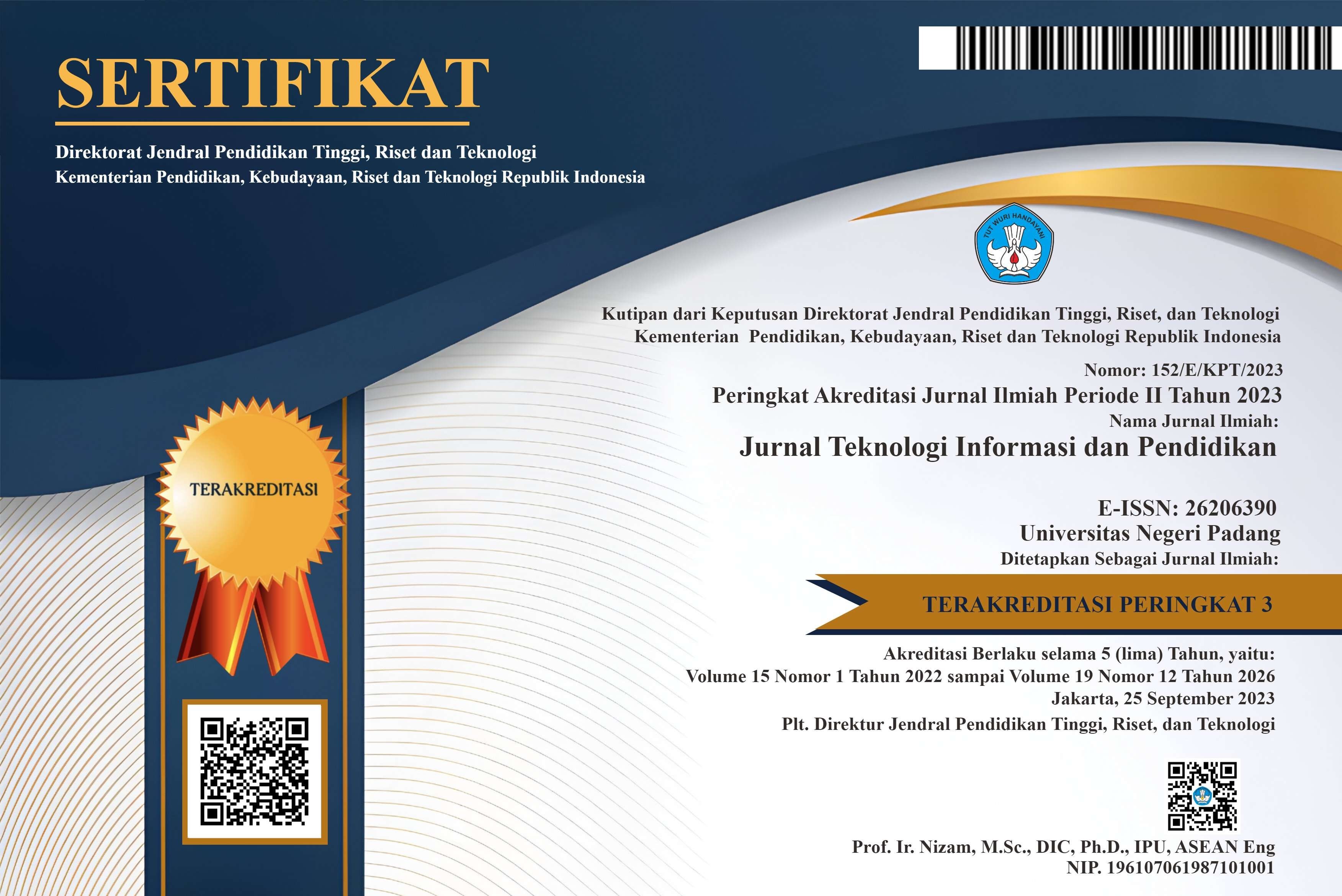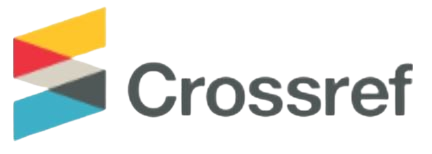U-Net Analysis Architecture For MRI Brain Tumor Segmentation
Abstract
Identification, segmentation and detection of brain tumor-infected parts on MRI images require precision and a long time. MRI of the brain has an important role, one of which is used for analysis or consideration before performing surgery. However, MRI images cannot provide optimal results when analyzed because of the presence of noise and the bone and tumor (clots of flesh) have the same appearance. Many studies related to brain tumor segmentation have been carried out before, and some of the good methods are CNN U-Net. We segmented brain tumors on MRI with U-Net. The purpose of this study was to analyze the results of changes in the number of neurons in the convolution layer of the U-Net architecture in segmenting brain tumors. We use two scenarios of changing the number of neurons at the U-Net convolution layer. The first scenario is the number of neurons successively at each level of the U-Net architecture [32,64,128,256,512], and the second scenario is [16,32,64,128,256]. And the results of scenario two can segment brain tumors on MRI images that resemble ground truth. The results of brain tumor segmentation in MRI images with the U-Net second scenarios have an average Dice value of 0.768.
References
R. Sigit, A. Wulandari, N. Rofiqah, and H. Yuniarti, “Automatic detection brain segmentation to detect brain tumor using MRI,” Int. J. Adv. Sci. Eng. Inf. Technol., vol. 9, no. 6, 2019, doi: 10.18517/ijaseit.9.6.8536.
E. Varijki and B. K. Triwijoyo, “Segmentasi Citra MRI Menggunakan Deteksi Tepi Untuk Identifikasi Kanker Payudara,” J. Matrik, vol. 15, no. 2, 2017, doi: 10.30812/matrik.v15i2.38.
S. Asriningrum, K. Ansory, and T. P. Hasan, “Perbandingan Pegukuran Volume Tumor Brain MRI Menggunakan Teknik Manual dan Metode Active Contour,” J. Imejing Diagnostik, vol. 6, pp. 51–59, 2020.
A. Maruthamuthu and L. P. Gnanapandithan G., “Brain tumour segmentation from MRI using superpixels based spectral clustering,” J. King Saud Univ. - Comput. Inf. Sci., vol. 32, no. 10, 2020, doi: 10.1016/j.jksuci.2018.01.009.
J. Zhang, Z. Jiang, J. Dong, Y. Hou, and B. Liu, “Attention Gate ResU-Net for Automatic MRI Brain Tumor Segmentation,” IEEE Access, vol. 8, 2020, doi: 10.1109/ACCESS.2020.2983075.
M. Soltaninejad et al., “Automated brain tumour detection and segmentation using superpixel-based extremely randomized trees in FLAIR MRI,” Int. J. Comput. Assist. Radiol. Surg., vol. 12, no. 2, 2017, doi: 10.1007/s11548-016-1483-3.
R. V. Manjunath and K. Kwadiki, “Automatic liver and tumour segmentation from CT images using Deep learning algorithm,” Results Control Optim., vol. 6, no. September 2021, p. 100087, 2022, doi: 10.1016/j.rico.2021.100087.
B. Lee, N. Yamanakkanavar, and J. Y. Choi, “Automatic segmentation of brain MRI using a novel patch-wise U-net deep architecture,” PLoS One, vol. 15, no. 8 August, 2020, doi: 10.1371/journal.pone.0236493.
T. Yang, J. Song, L. Li, and Q. Tang, “Improving brain tumor segmentation on MRI based on the deep U-net and residual units,” J. Xray. Sci. Technol., vol. 28, no. 1, 2020, doi: 10.3233/XST-190552.
I. B. L. M. Suta, M. Sudarma, and I. N. Satya Kumara, “Segmentasi Tumor Otak Berdasarkan Citra Magnetic Resonance Imaging Dengan Menggunakan Metode U-NET,” Maj. Ilm. Teknol. Elektro, vol. 19, no. 2, 2020, doi: 10.24843/mite.2020.v19i02.p05.
T. L. Jones, T. J. Byrnes, G. Yang, F. A. Howe, B. A. Bell, and T. R. Barrick, “Brain tumor classification using the diffusion tensor image segmentation (D-SEG) technique,” Neuro. Oncol., vol. 17, no. 3, 2015, doi: 10.1093/neuonc/nou159.
Z. Akkus, A. Galimzianova, A. Hoogi, D. L. Rubin, and B. J. Erickson, “Deep Learning for Brain MRI Segmentation: State of the Art and Future Directions,” Journal of Digital Imaging, vol. 30, no. 4. 2017, doi: 10.1007/s10278-017-9983-4.
A. Ramdani, A. A. Pravitasari, and S. S. Pangastuti, “Segmentasi Citra MRI Tumor Otak dengan Menggunakan Metode Gaussian Mixture Model,” Semin. Nas. Stat. IX, vol. 18, pp. 121–126, 2019.
A. N. Rais and D. Riana, “Segmentasi Citra Tumor Otak Mengunakan Support Vector Machine Classifier,” Semin. Nas. Inov. dan Tren, vol. 1, no. 1, 2018.
N. Yamanakkanavar and B. Lee, “Using a Patch-Wise M-Net Convolutional Neural Network for Tissue Segmentation in Brain MRI Images,” IEEE Access, vol. 8, 2020, doi: 10.1109/ACCESS.2020.3006317.
Kaggle, “Dataset Brain MRI.” https://www.kaggle.com/datasets/mateuszbuda/lgg-mri-segmentation.
E. Asri, Y. Sonatha, I. Rahmayuni, and M. Azmi, “Detection of Mask Usage Using Image Processing and Convolutional Neural Network (CNN) Methods,” J. Teknol. Inf. dan Pendidik., vol. 15, no. 1, 2022, doi: 10.24036/jtip.v15i1.548.
Q. T. Bich Nhuong, P. D. Sac, N. M. Nhut, and H. T. Le, “3D Model Reconstruction Using Gan and 2.5D Sketches from 2D Image,” J. Teknol. Inf. dan Pendidik., vol. 15, no. 2, pp. 1–11, 2022, doi: 10.24036/jtip.v15i2.613.
B. Sekeroglu, S. S. Hasan, and S. M. Abdullah, “Comparison of Machine Learning Algorithms for Classification Problems,” Adv. Intell. Syst. Comput., vol. 944, no. 2, pp. 491–499, 2020, doi: 10.1007/978-3-030-17798-0_39.
H. Li, A. Li, and M. Wang, “A novel end-to-end brain tumor segmentation method using improved fully convolutional networks,” Comput. Biol. Med., vol. 108, no. March, pp. 150–160, 2019, doi: 10.1016/j.compbiomed.2019.03.014.
K. Qi et al., “X-Net: Brain Stroke Lesion Segmentation Based on Depthwise Separable Convolution and Long-Range Dependencies,” in Lecture Notes in Computer Science (including subseries Lecture Notes in Artificial Intelligence and Lecture Notes in Bioinformatics), 2019, vol. 11766 LNCS, doi: 10.1007/978-3-030-32248-9_28.
Copyright (c) 2023 Jurnal Teknologi Informasi dan Pendidikan

This work is licensed under a Creative Commons Attribution-ShareAlike 4.0 International License.















.png)














